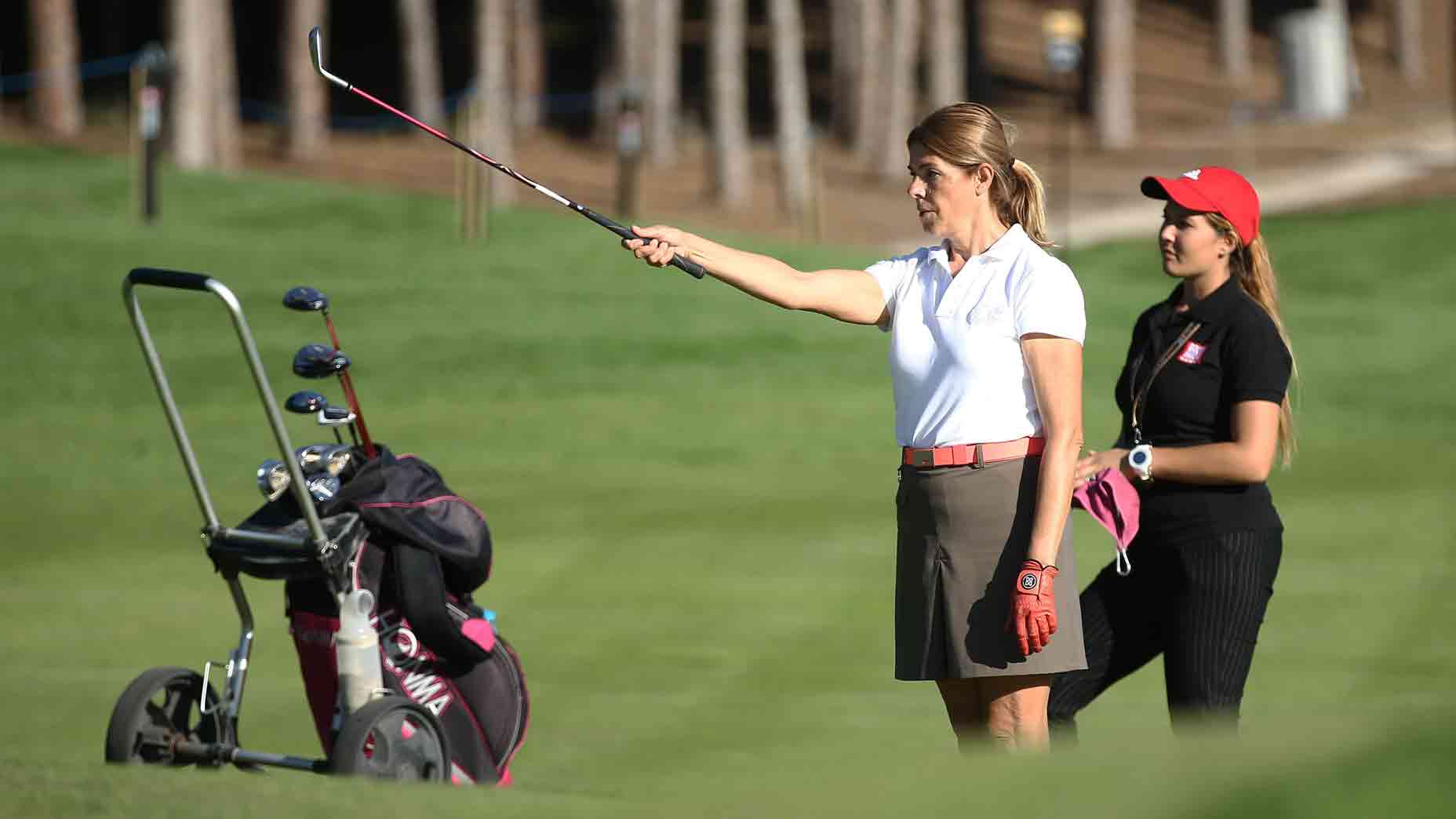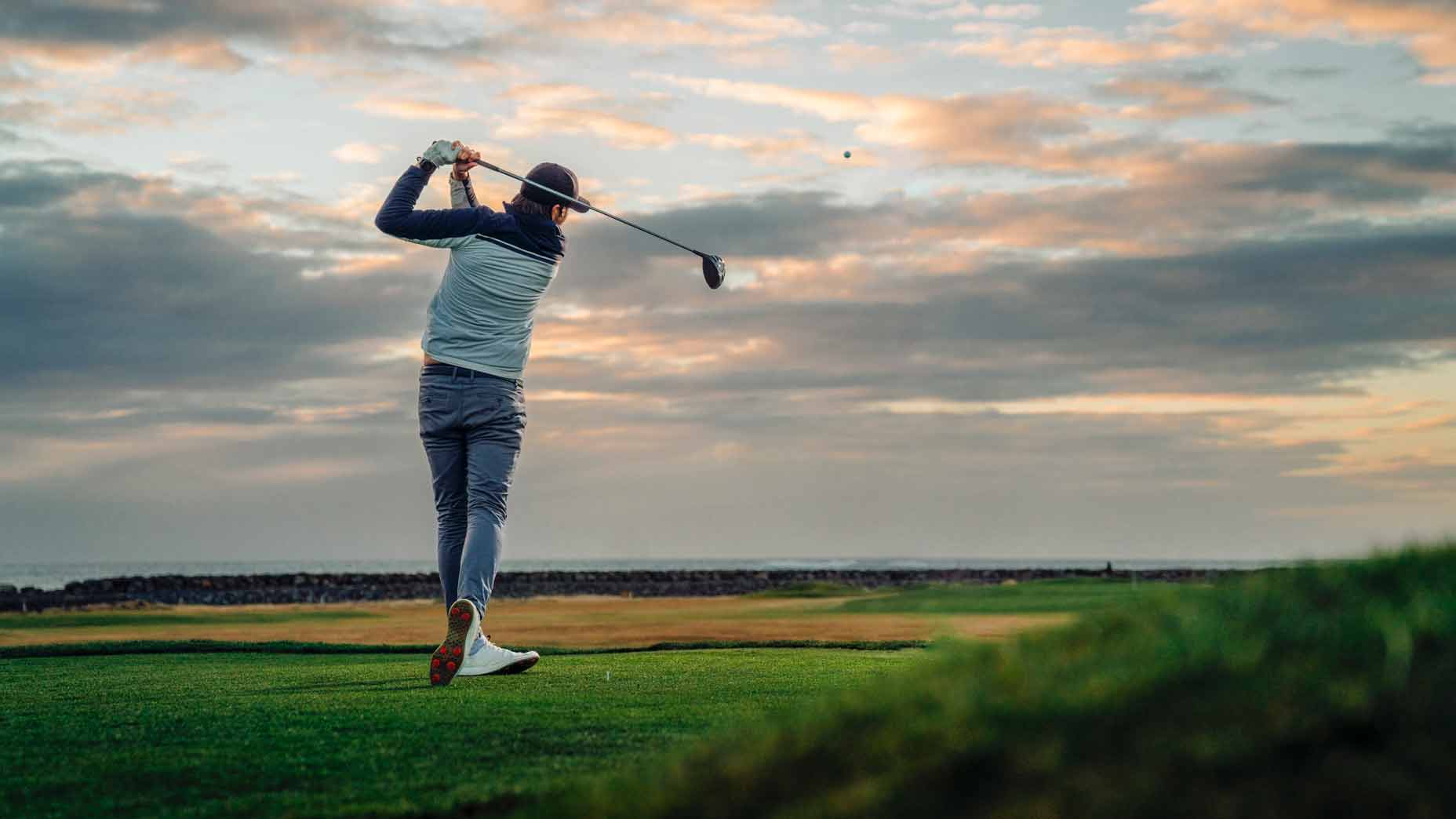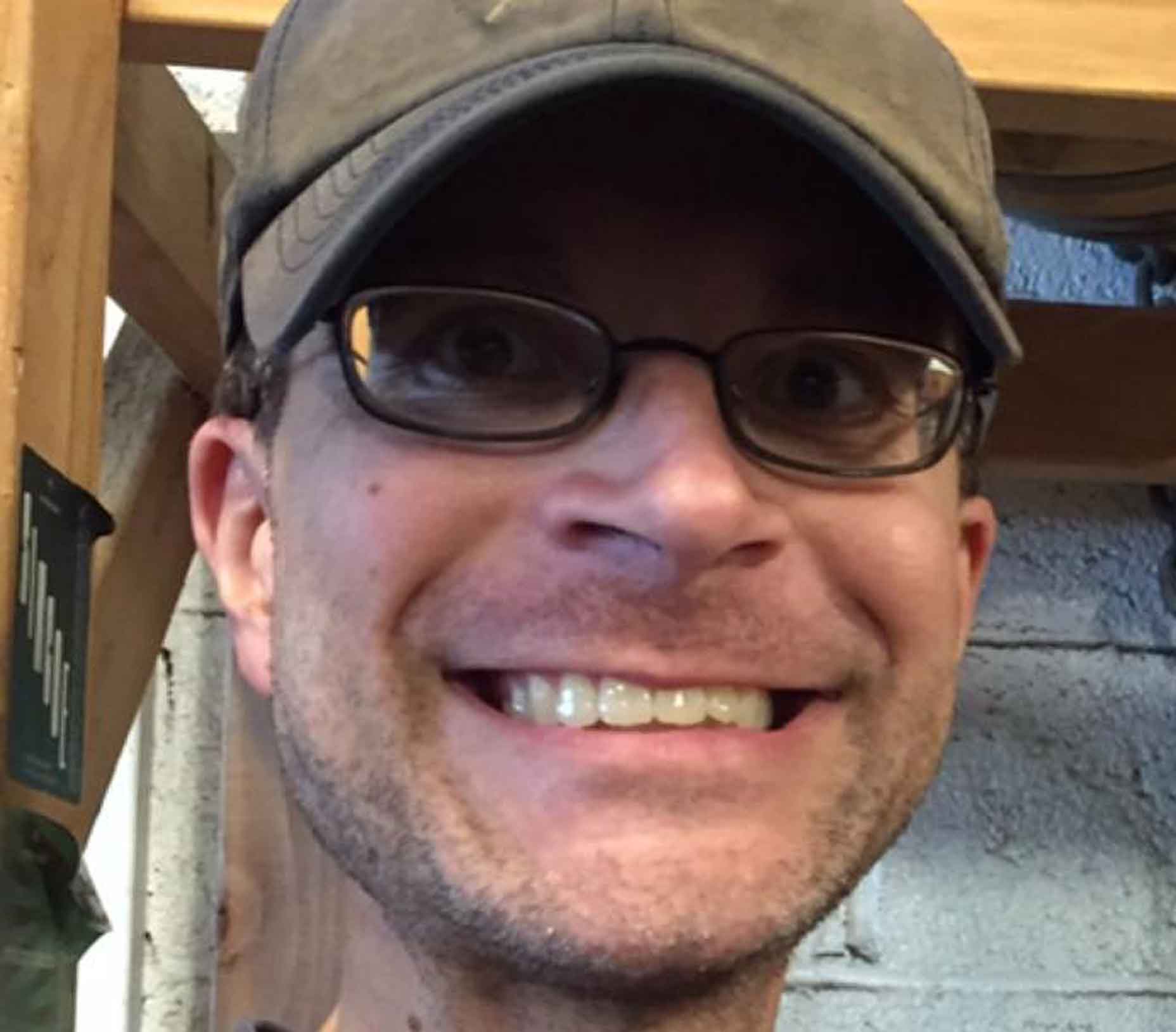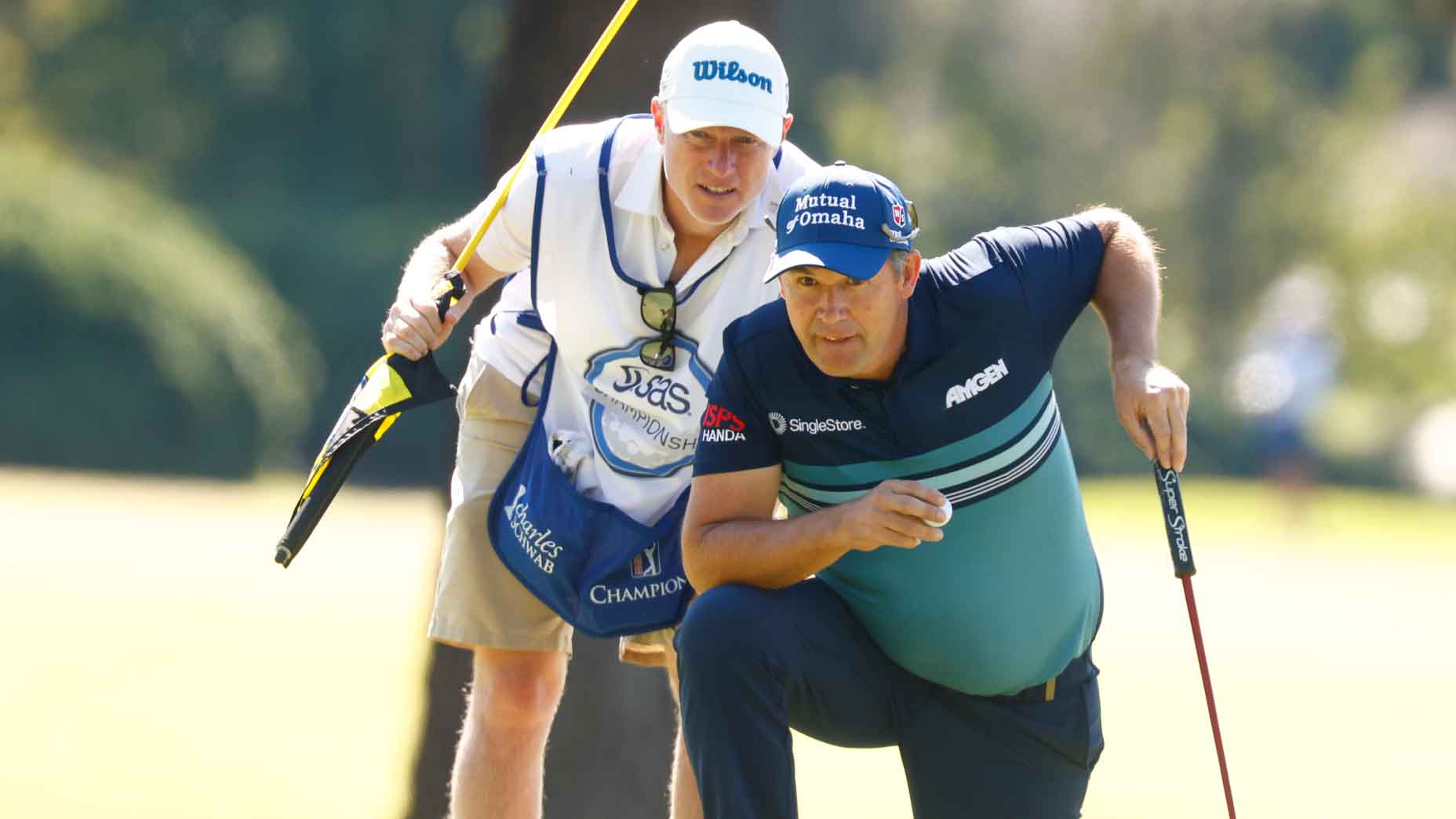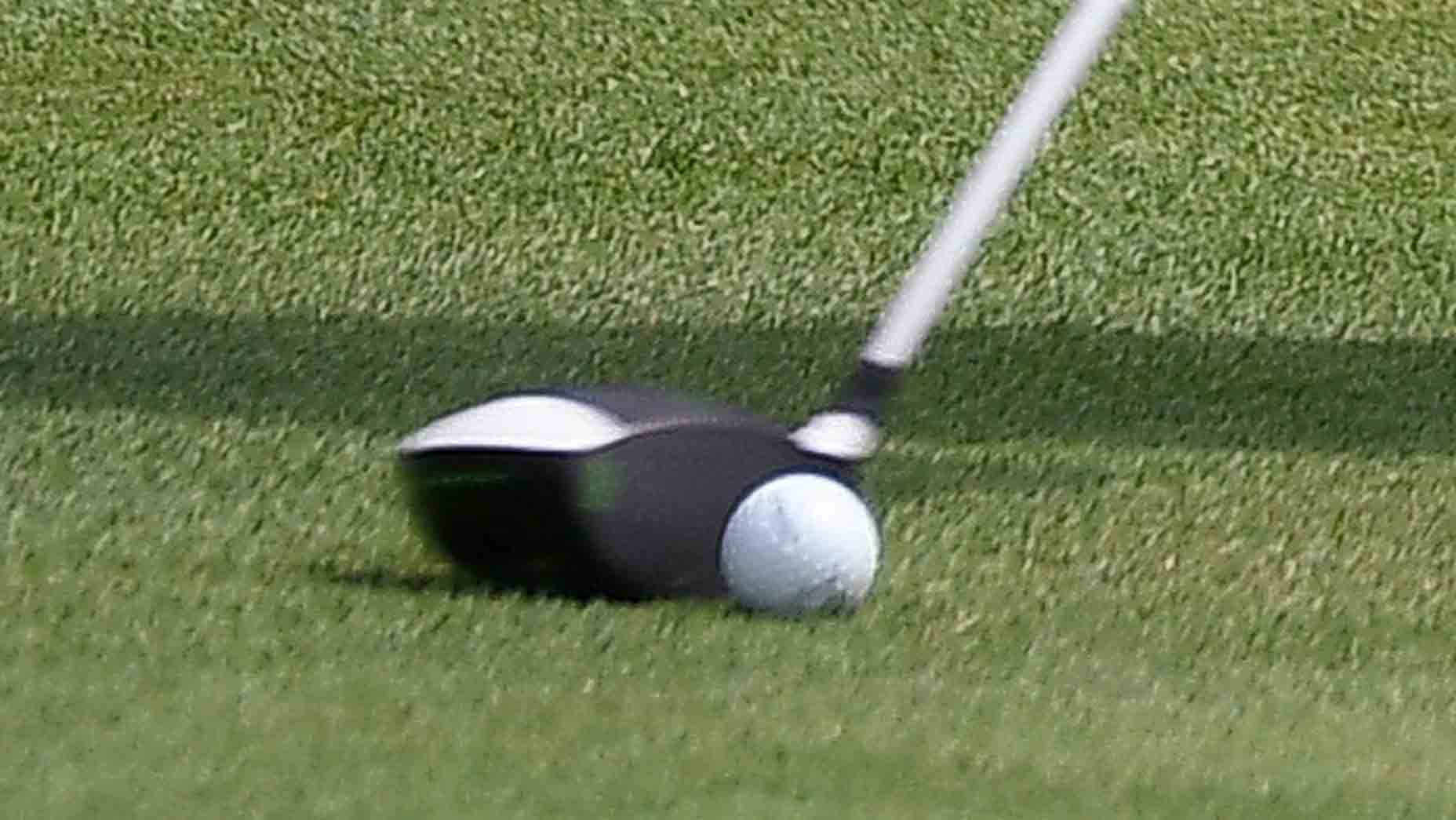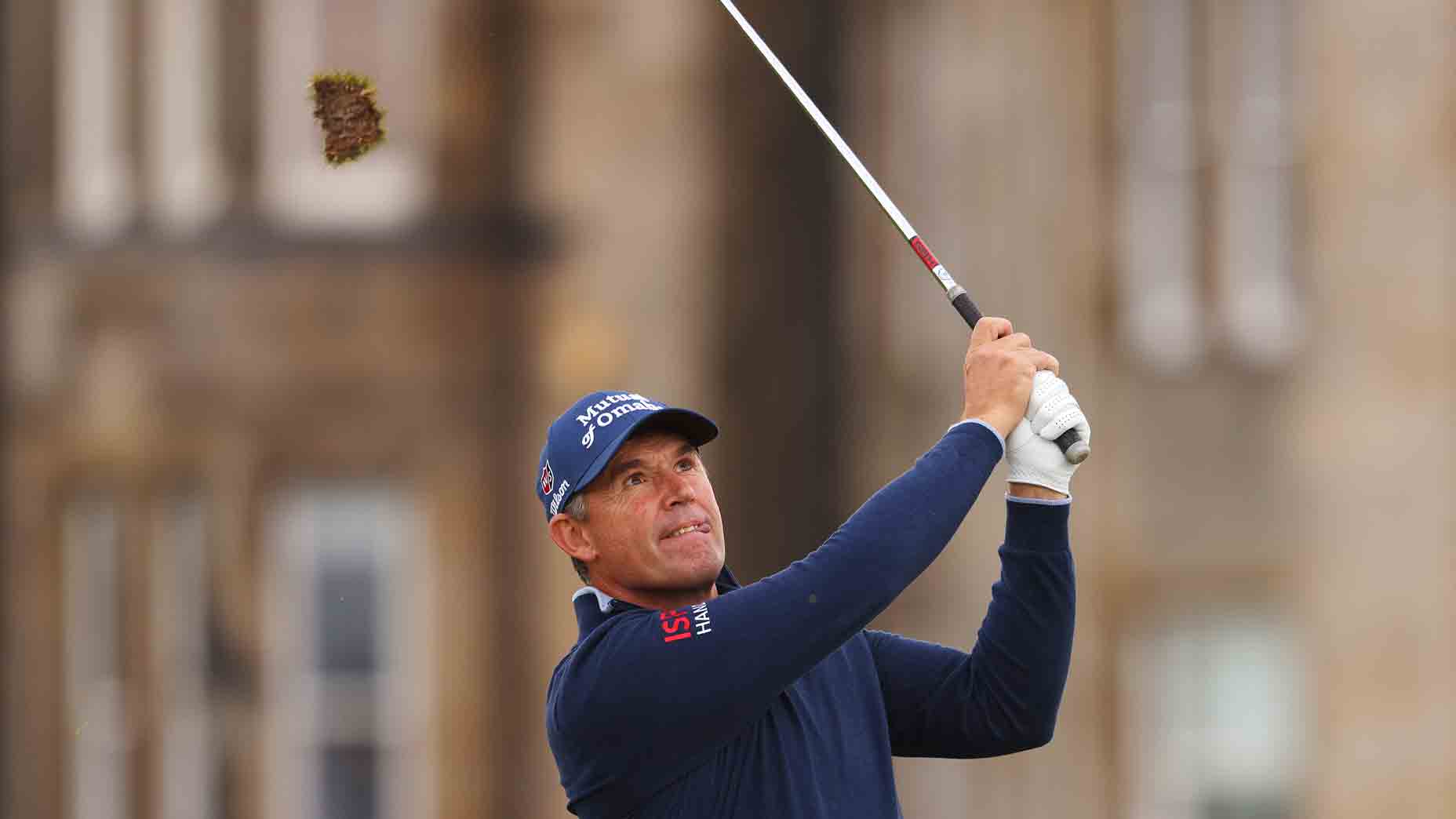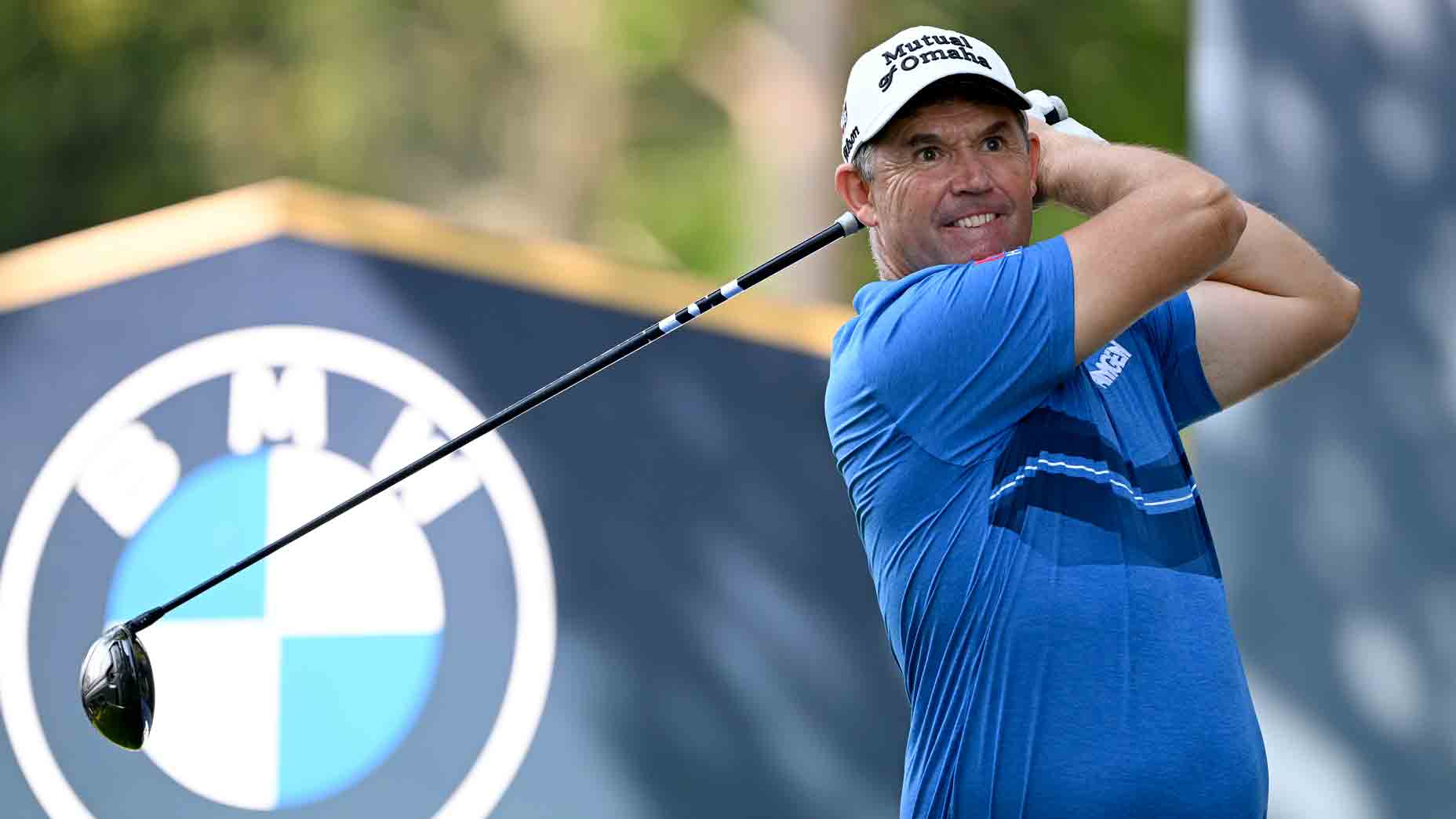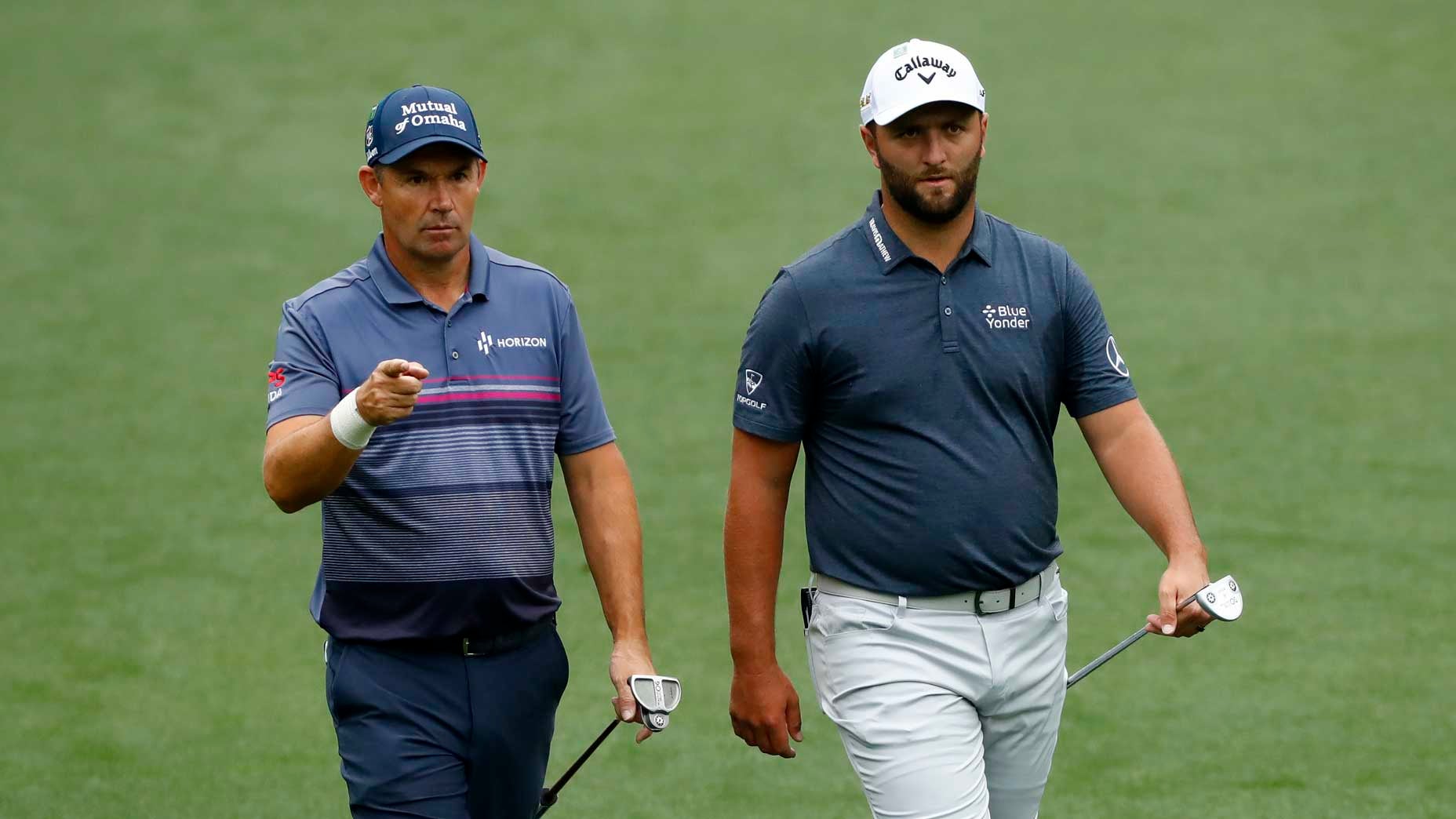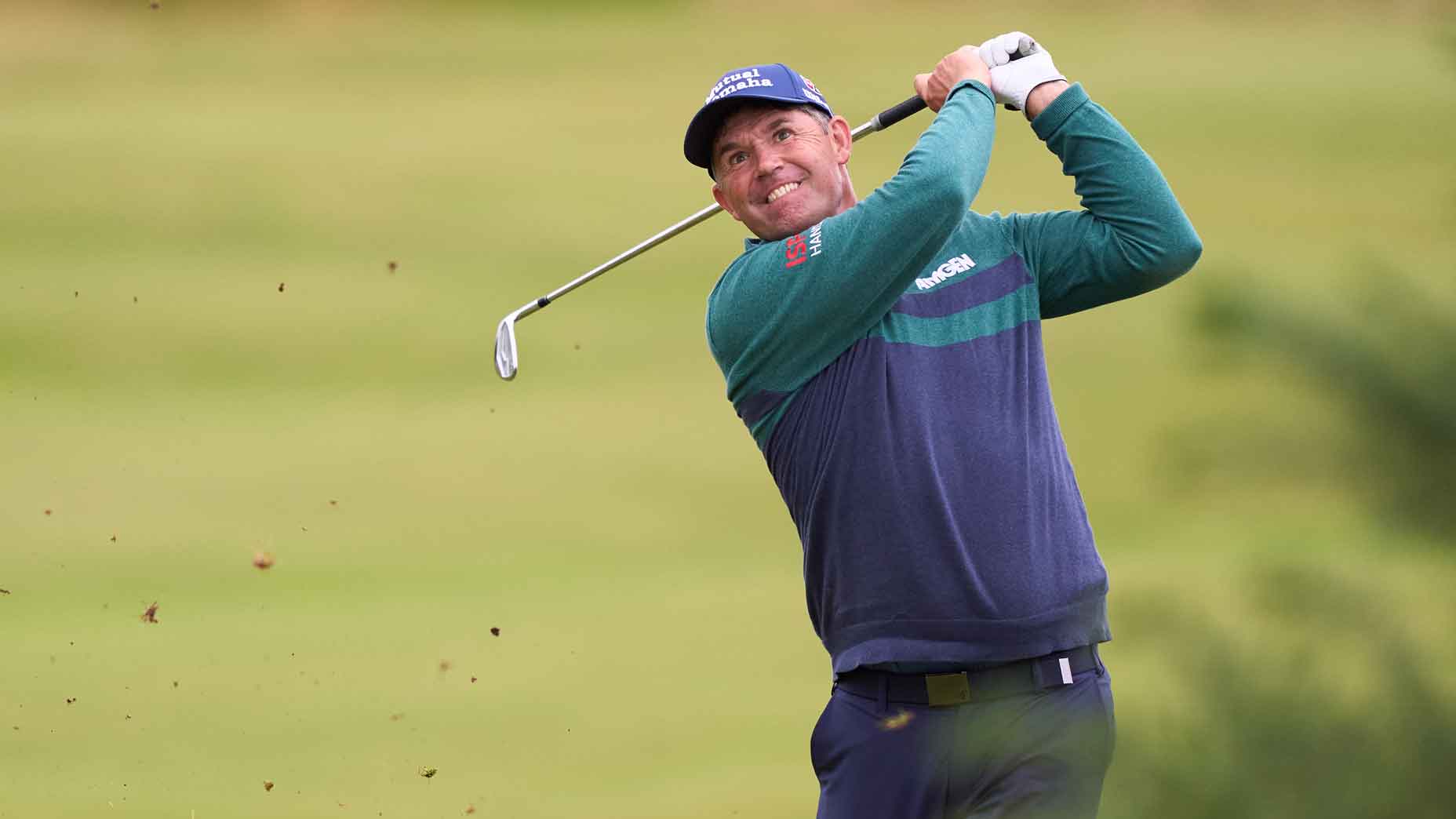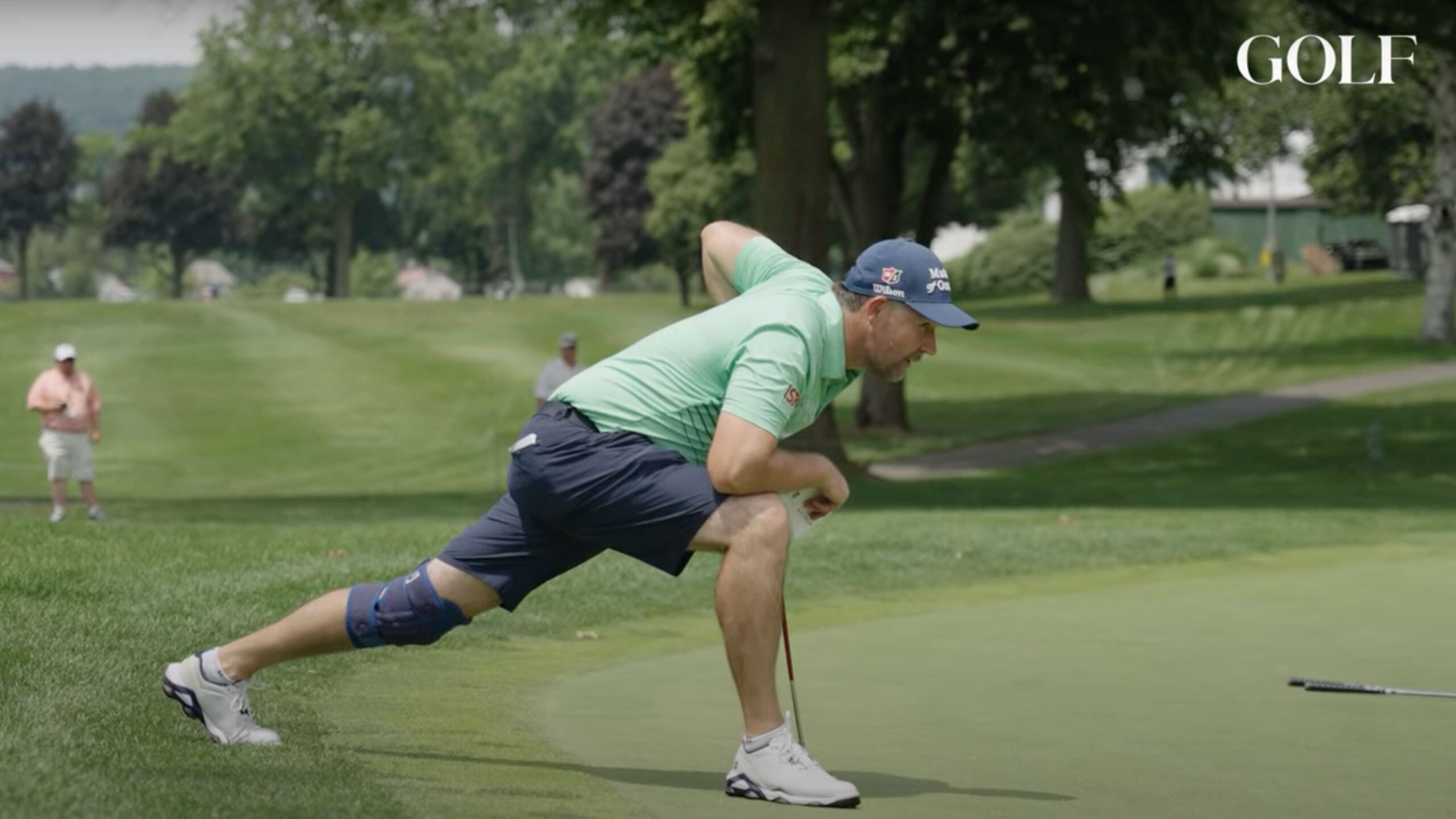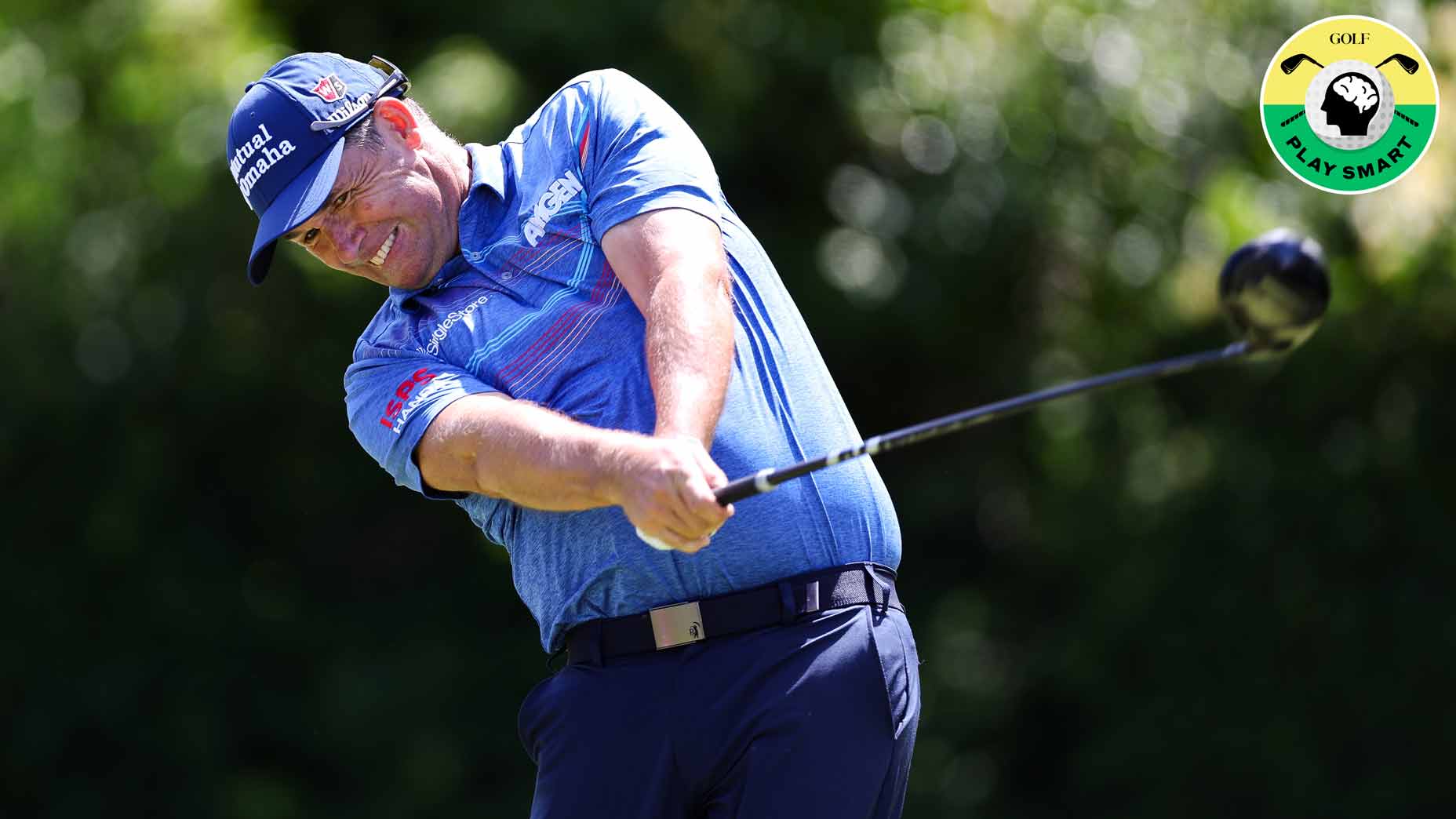‘99 percent of amateurs get this wrong,’ major winner says. Here’s his fix
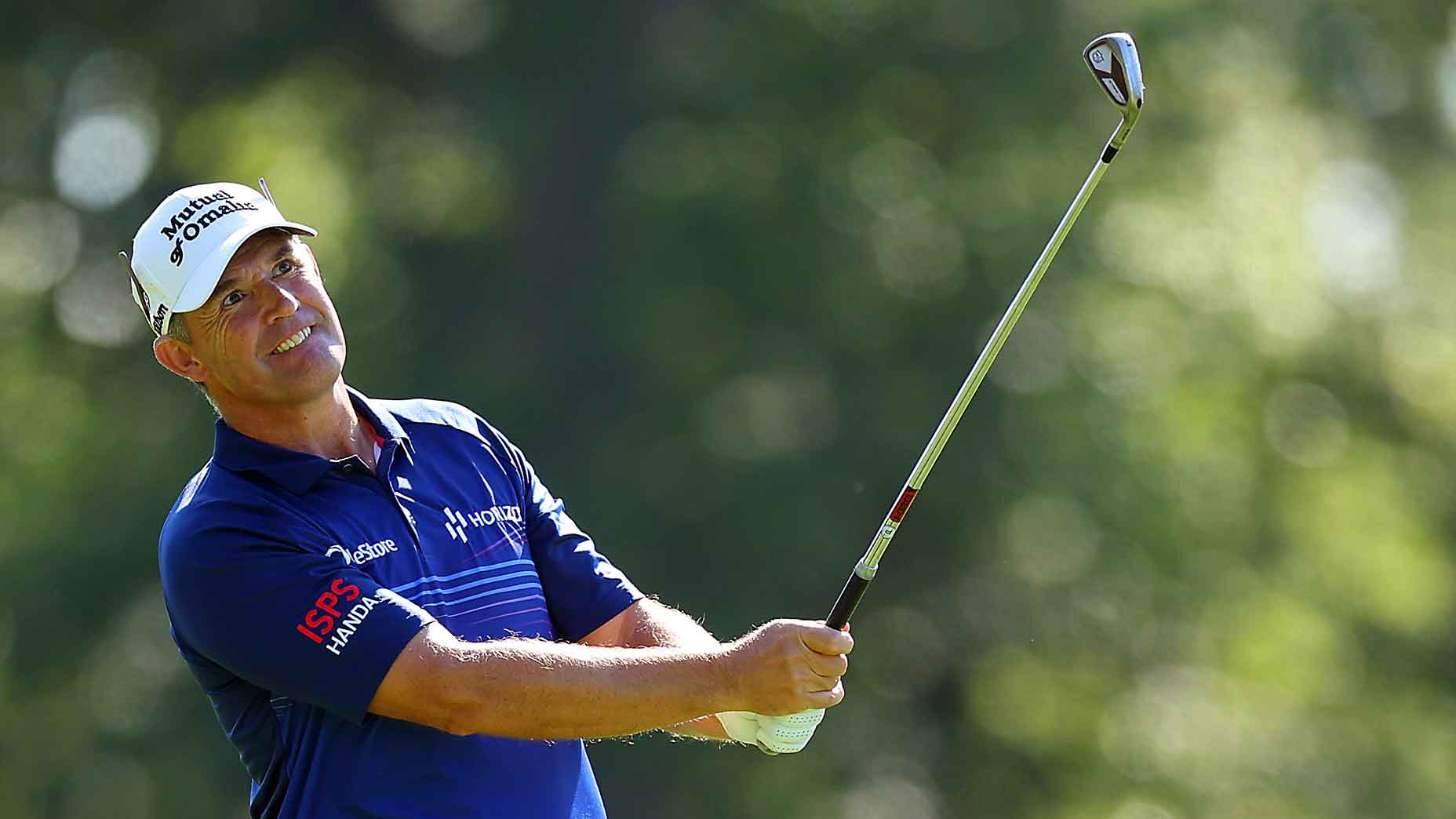
Padraig Harrington hits a shot on Thursday on the 9th hole at Wentworth Club.
Getty Images
A short arm swing, with a full turn back, Padraig Harrington says. And a short arm swing, with a full turn through.
And you’ve got a good relationship between those parts of the body. Easy enough. Easy game.
So why is the three-time major winner standing in front of a video camera for six-plus minutes going over it all?
He gives his answer in the label of the YouTube video he released this week.
“Sync Your Body & Arms. (99% of Amateurs Get This Wrong)”
All of it’s worth a watch, and you can — and should — do so here, along with the 45 (!) other video tips Harrington has put out in his Paddy’s Golf Tips series. In this space, we’ll ask just some questions. The first involves that video title (which made this author click).
What does Harrington see wrong?
“So what we see happening a lot in golf,” Harrington said on the video, “people think that speed is generated by the torso turning. They think if I can turn harder, I’m going to get speed. Yeah, the toros adds some speed, but minute amount of speed, maybe five percent of the speed is coming from the torso turning extra. What actually happens is most people trying to turn it means they lose complete control of their arms and they lose their speed. …
“So what we don’t want to see is this effort of turning … if I turn and my arms go with me, there really is no acceleration in that. So you get a lot of people, and they turn, and they hook, they hit a big cut, there’s not a lot of power in it. I put a lot of effort into it. My torso — if I had a monitor measuring the speed of my torso, I guarantee you it was probably going quicker than my normal swing.”
So what should the amateur bunch do?
“What we really want,” Harrington said on the video, “we want to make sure that everything is moving — that the sequence is right, and we have the right amount of torso and the right amount of arms. I would recommend for a lot of people, start off by relaxing the arms. Get them a little bit floppy. So hit a few shots where the arms are just relaxed. …
“OK, relax them. … We want to get a little bit back to that, rather than the rigid hard swing.”
Now what?
“OK, once we got that motion that we feel our arms are a little bit involved,” Harrington said on the video, “now we’re going to put our body back in. OK, so we talked about this other times where we’re trying to grip and turn and stretch and pull the arm down. But the big key is, we actually, both in the backswing and the downswing, we want a bigger turn relative to our arm swing. So it’s not much … a big arm swing, no turn. We’d much prefer a full turn and a shoulder height with the hands. … OK, so you will get that turn by just concentrating and not being too long with the arms.
“So if somebody said to you, you can only swing this height [raises right arm to shoulder level], you will add in shoulder turn. It’s just natural. You go, I’m making the biggest swing I can to here. Whereas, somebody said you’re able to swing up here [takes club past parallel], you tend not to use your body as much. So a shorter arm swing, the feeling of a shorter arm swing, both back and through, will lead to a better relationship with your body, and your body will actually turn more to compensate for the short arm swing. So we’re talking three-quarter to three-quarter.”
What problems can happen?
“We don’t want in motion, which a lot of people have struggled to get speed and power, they do one or two things,” Harrington said on the video. “They generally either have too much arms, which we don’t want the club flying up here on its own [takes club to his back on the follow-through]; it will get there on a full swing when we’re flat-out. We definitely don’t want the big drift forward with the body. That ain’t going to help us.”
One more question.
What’s this tip’s summary?
It’s the start of this story. Here, Harrington says it another way.
“I’m trying to keep that relationship — in my head, full follow-through with a short arms; a full shoulder turn with a short arms in the backswing — is what I’m thinking about in order to get that relationship. I certainly don’t want to see the arms getting there for no other reason. And I definitely don’t want to see in the downswing, this idea of your body turning and getting ahead of it. You’re much better accelerating through to a short finish than turning your body and leading the club through impact.
“That’s not going to help.”
Editor’s note: To watch the complete video, please click here.


